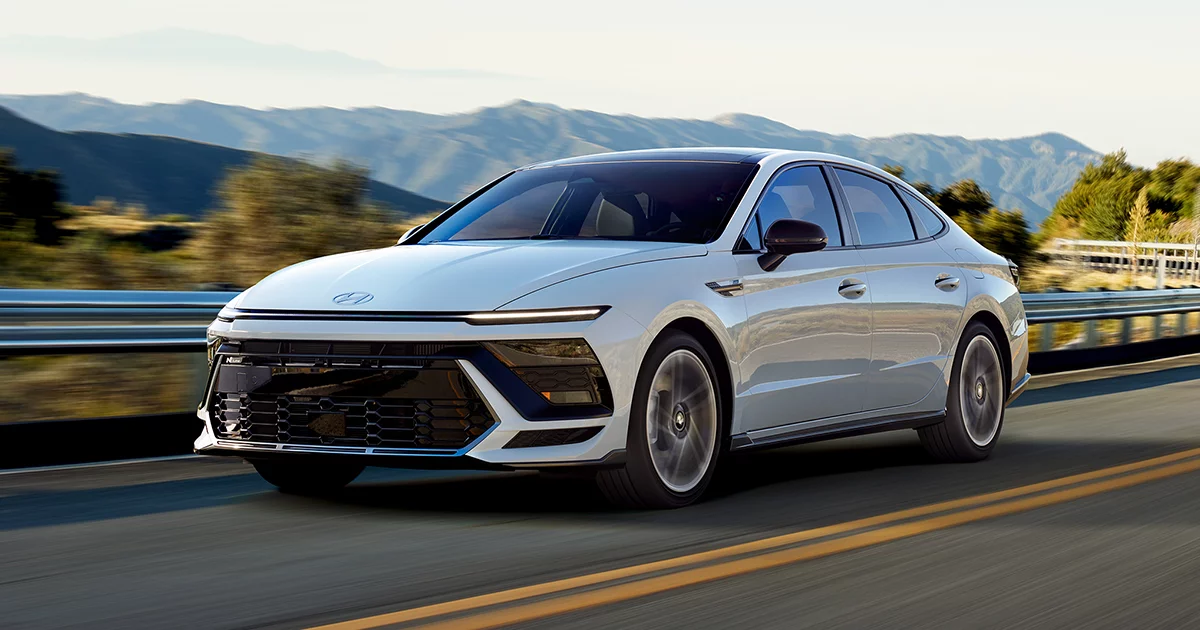When summer arrives in full force, the impact of rising temperatures doesn’t stop at the sidewalk. Our vehicles, often left baking under the scorching sun for hours, can become unbearably hot inside—so hot, in fact, that simply entering your car feels like stepping into a furnace.
This discomfort is more than just a nuisance; it’s a daily reality for millions of drivers, especially in sun-drenched regions like the Southwest U.S., the Middle East, or Southern Europe. As such, the ability of a car to manage internal temperatures during the summer months has become a critical—yet often overlooked—factor in vehicle selection.
While many buyers obsess over horsepower, fuel efficiency, and infotainment features, the experience of a cool, comfortable interior on a 100°F day is equally important. A well-cooled cabin can mean the difference between a relaxing commute and a suffocating one.
The ability to stay cool isn’t just about how strong the air conditioning is; it’s also about how well the vehicle retains (or repels) heat, how efficiently the HVAC system functions, and what kind of technological features—like remote start, ventilated seats, or UV-blocking glass—are included in the design.
On one end of the spectrum, some cars are designed with hot climates in mind. These vehicles boast advanced cooling systems, heat-resistant materials, and comfort-focused features that help them remain pleasant sanctuaries even in the middle of a heatwave.
These models often include thoughtful details such as pre-conditioning systems, ventilated seating, and reflective glass coatings that reduce interior temperature build-up. They’re engineered not just for performance and aesthetics, but for real-world usability when the environment outside becomes extreme.
On the opposite end, some cars seem completely unprepared for summer’s wrath. Whether due to their compact design, outdated HVAC systems, dark interiors, or a lack of basic heat-mitigating features, these vehicles can make warm-weather driving an exercise in discomfort.
Without ventilated seats, remote climate control, or even sufficient insulation, these models can leave drivers and passengers drenched in sweat, frustrated, and even at risk of heat-related health concerns, especially after sitting idle under the blazing sun for extended periods.
In this article, we take a look at ten different vehicles—five that excel in keeping you cool, and five that are unfortunately known for turning into ovens during the summer months.
The aim isn’t to criticize cars purely for their aesthetics or performance but to highlight how well (or poorly) they handle one of the most common environmental challenges facing drivers today.
If you live in a region where summer heat is a serious concern—or you’ve ever felt the misery of sitting on a scalding seat—this breakdown will help you make an informed decision when shopping for your next car.
Whether you’re a parent looking to keep the kids cool in the backseat, a commuter dreading the rush-hour heat, or just someone who values comfort on the road, understanding which cars manage summer temperatures well—and which don’t—could make your daily drives a lot more bearable.
Also Read: 5 Cars With Factory Batteries That Last 6+ years and 5 That Don’t Make 3
5 Cars That Keep Their Cool in Summer

1. Tesla Model Y
The Tesla Model Y is a prime example of how cutting-edge technology can transform the driving experience, particularly in managing heat during the summer months.
One of its most appreciated features is Cabin Overheat Protection, which automatically activates the car’s cooling system when the temperature inside the cabin exceeds a certain threshold.
This means that even if you forget to leave your AC running or don’t use the remote-start option, the car will cool itself down automatically. This feature is incredibly useful for drivers who live in areas with extreme heat, as it prevents the interior from becoming a dangerous heat trap when parked in direct sunlight.
Adding to this, the Model Y is equipped with a powerful HVAC system that not only cools the car quickly but also works efficiently in all weather conditions.
The car’s intelligent climate control system offers the flexibility to adjust temperature and airflow in precise increments, ensuring that the entire cabin is evenly cooled.
In fact, one of the major advantages of this vehicle is how quickly it brings down the cabin temperature.
Unlike some cars that require several minutes of blasting cold air before you start to feel comfortable, the Tesla Model Y uses a combination of a high-powered air-conditioning system and its ability to cool the air quickly, so it reaches a comfortable level within minutes.
The all-glass roof in the Tesla Model Y, which is one of its signature features, has been designed with heat-rejecting technology. The roof features IR (infrared) and UV coatings that prevent solar heat from entering the cabin while still letting in natural light.
This is a rare and thoughtful feature, as many cars with large glass roofs often heat up significantly inside due to the lack of such coatings. The Model Y also has light-colored interior materials, which help reflect sunlight rather than absorbing it, keeping the cabin cooler.
Combined with the ventilated seating, which provides direct cooling to the driver and passengers, it’s clear that the Model Y is engineered to maintain a comfortable environment even in the harshest of summer climates.
Finally, the remote start feature is a game-changer, particularly in scorching conditions. Through the Tesla app, you can remotely start the car and activate the air-conditioning system before entering, allowing the cabin to reach a comfortable temperature by the time you step inside.
In summary, Tesla’s focus on technology and design allows the Model Y to stay cool, even on the hottest of days, making it one of the best options for summer driving comfort.
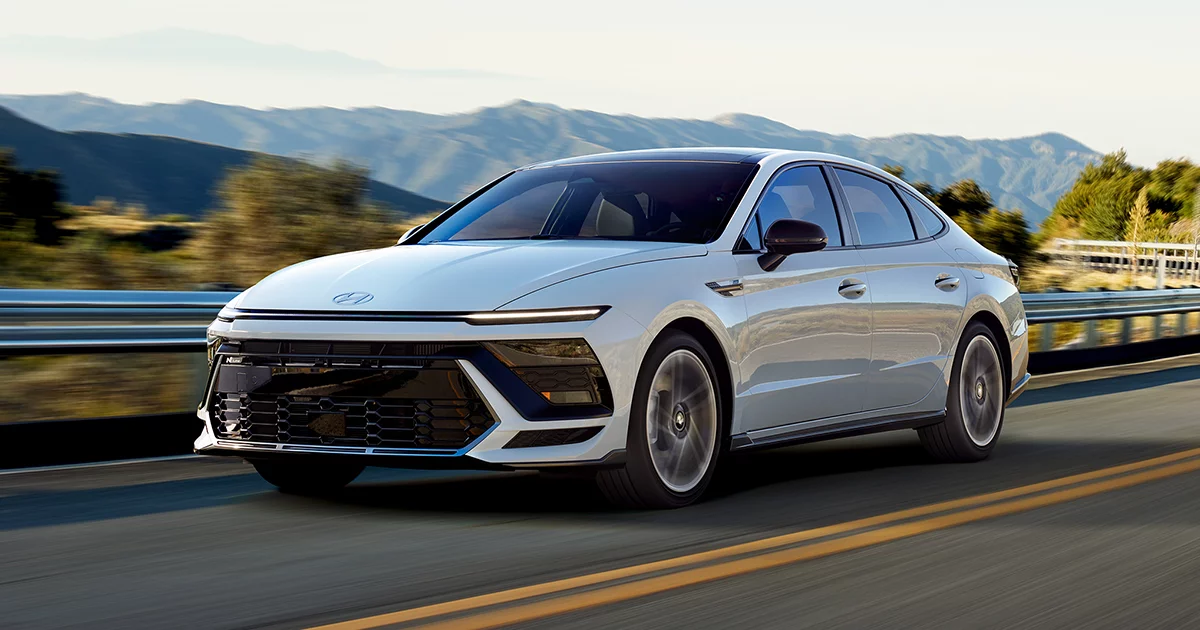
2. Hyundai Sonata (with Remote Smart Park Assist)
The Hyundai Sonata stands out as an affordable midsize sedan that excels in terms of summer comfort, thanks to a comprehensive suite of cooling features and smart engineering.
One of its top features is the Remote Smart Park Assist, which allows you to remotely start the vehicle and activate climate controls without having to step into the hot cabin.
This means that on hot summer days, you don’t have to suffer through a burning hot interior when you’re ready to drive.
Instead, you can start the car and allow the air conditioning to get a head start in cooling down the cabin before you even enter. This feature is particularly beneficial for drivers living in regions where temperatures soar above 100°F regularly.
Another key factor in the Sonata’s ability to stay cool is its multi-zone climate control system, which lets you adjust the temperature independently for both the driver and passengers. This is particularly helpful for those who may have different preferences when it comes to temperature.
In addition, the ventilated front seats, available on higher trims, work alongside the air-conditioning system to provide extra relief from the heat by actively circulating cool air through the seats.
This added feature can make a significant difference when driving in intense heat, as it helps regulate your body temperature in a way that traditional AC simply cannot.
The interior materials in the Sonata are also thoughtfully designed to keep the car cooler. The cabin includes light-colored fabrics and soft-touch materials that are less prone to absorbing heat than darker materials typically found in some cars.
The seats, for example, are made of breathable fabrics that don’t trap heat, allowing the cabin to stay more comfortable
. Moreover, the UV-reducing glass in the windows and windshield minimizes the amount of solar heat that enters the cabin, contributing to a more pleasant environment.
The design of the Sonata’s cabin takes into account both aesthetics and practicality, ensuring that you remain comfortable even on the hottest days.
When combined with features such as the smart key remote start and dual-zone climate control, the Sonata delivers a significant amount of comfort during summer months.
Whether you’re parked outside in the sun or driving through a heatwave, the Sonata’s interior features work together to create an environment that remains cool and welcoming throughout the day. The Hyundai Sonata isn’t just an affordable sedan—it’s one that’s equipped with smart cooling technology to handle the rigors of summer driving.
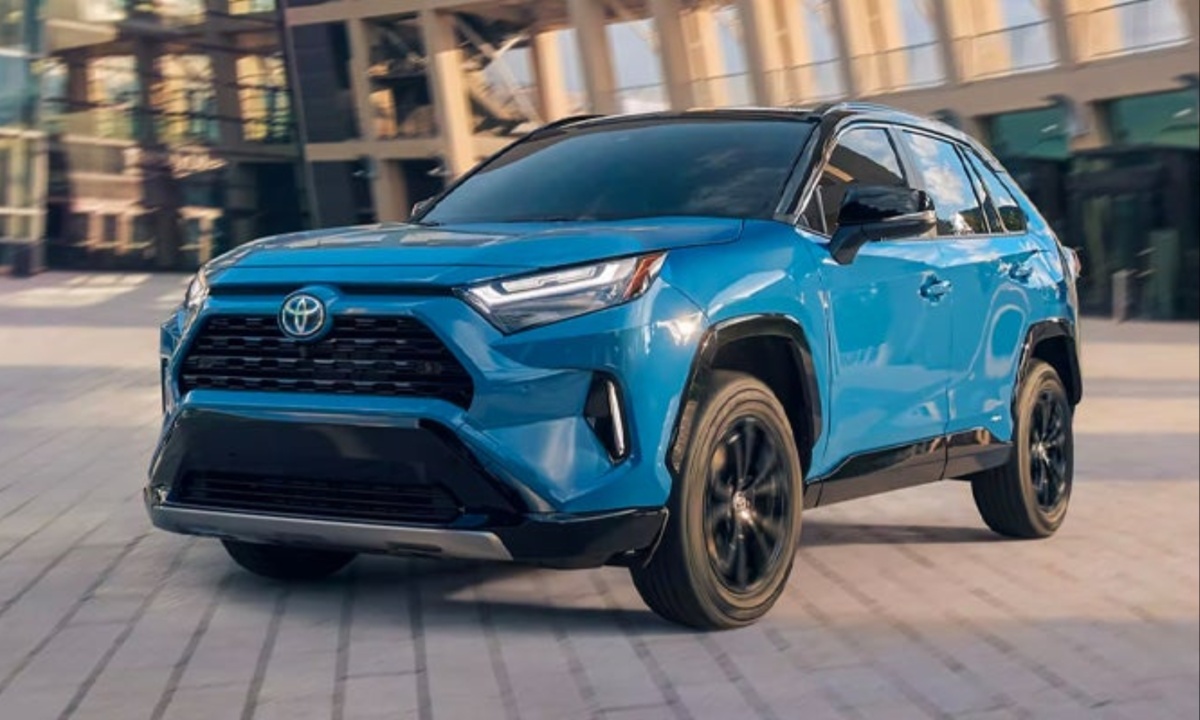
3. Toyota RAV4 Prime
The Toyota RAV4 Prime, a plug-in hybrid, is a standout when it comes to managing summer temperatures thanks to its innovative technology and versatile design. One of the best features of the RAV4 Prime is its remote start capability, which allows owners to precondition the cabin before they even get inside.
Using the Toyota app, drivers can start their car from a distance, activating both the engine and the air-conditioning system.
This is especially useful on hot summer days when the interior of the car could easily become an oven after sitting in the sun. By cooling the cabin remotely, the RAV4 Prime ensures that you’re never greeted by an unbearably hot interior when you’re ready to drive.
The powerful climate control system in the RAV4 Prime is another key reason why it stays cool during the summer months. The system is designed to cool down the cabin quickly and efficiently, with dual-zone climate control available on higher trims. This allows both the driver and passengers to adjust the temperature to their liking.
The seats in the RAV4 Prime are also available with ventilation on higher trims, which actively circulates cool air through the seat cushions, ensuring that the heat doesn’t get trapped under your body, which can be a common problem in cars without ventilated seating.
In addition to its cooling systems, the RAV4 Prime is built with highly reflective, heat-resistant materials. The windows feature UV-blocking coatings, which help keep the interior temperature stable even when parked in the sun for long periods.
The RAV4 Prime’s cabin is spacious, but it’s also thoughtfully insulated, with materials that reflect more light and heat rather than absorb it. Its panoramic sunroof, while large, is also equipped with UV-blocking glass, further enhancing the RAV4 Prime’s ability to stay cool on sunny days.
Beyond just cooling features, the Toyota RAV4 Prime is also a highly practical vehicle, designed to meet the needs of drivers who live in hot climates.
Its hybrid powertrain provides the benefit of improved fuel efficiency while reducing the need for excessive reliance on air conditioning, which can strain fuel economy in gas-only vehicles.
The RAV4 Prime’s ability to combine environmental consciousness with comfort and performance makes it an excellent choice for those who live in areas where summers are particularly intense.

4. Volvo XC60 Recharge
Volvo has long been known for its focus on both safety and comfort, and the XC60 Recharge, a plug-in hybrid, takes those principles to the next level when it comes to keeping cool in the summer. One of its standout features is pre-conditioning, which allows you to remotely activate the climate control system before even entering the car.
Using the Volvo On Call app, drivers can start the air-conditioning system and prepare the cabin for the journey ahead, ensuring that the car is already cooled down and ready for action before they even step inside. This feature is invaluable when you’re leaving a hot parking lot or garage after the car has been sitting in the sun.
In terms of cooling efficiency, the XC60 Recharge offers four-zone climate control, which is an excellent way to keep every passenger comfortable during long drives. Each zone can be adjusted independently, so everyone can control their preferred temperature without having to compromise.
This is especially useful during the summer months when temperatures fluctuate, and not everyone in the car might enjoy the same cool setting. For added comfort, the Volvo XC60 also offers ventilated seats, which work in tandem with the air-conditioning system to provide cool, refreshing air directly to your body, alleviating the discomfort of hot leather or fabric seats.
Volvo’s commitment to light-colored, breathable interior materials also contributes to a more pleasant experience in hot weather. The light, natural tones of the cabin don’t absorb as much heat as darker colors, and the materials themselves have been selected to be as heat-resistant as possible.
The XC60 Recharge also boasts laminated UV-filtering windows, which are designed to block out harmful rays and reduce the amount of heat that enters the cabin. This level of insulation, combined with the vehicle’s excellent air-conditioning system and ventilated seating, makes the XC60 Recharge a standout in terms of comfort on hot summer days.
Volvo’s focus on sustainability also plays a part in the XC60 Recharge’s ability to keep cool. The vehicle is designed with energy-efficient systems that help to maintain a comfortable cabin temperature without wasting fuel.
For anyone who’s looking for a luxurious and eco-friendly option that doesn’t compromise on summer comfort, the XC60 Recharge is a fantastic choice.
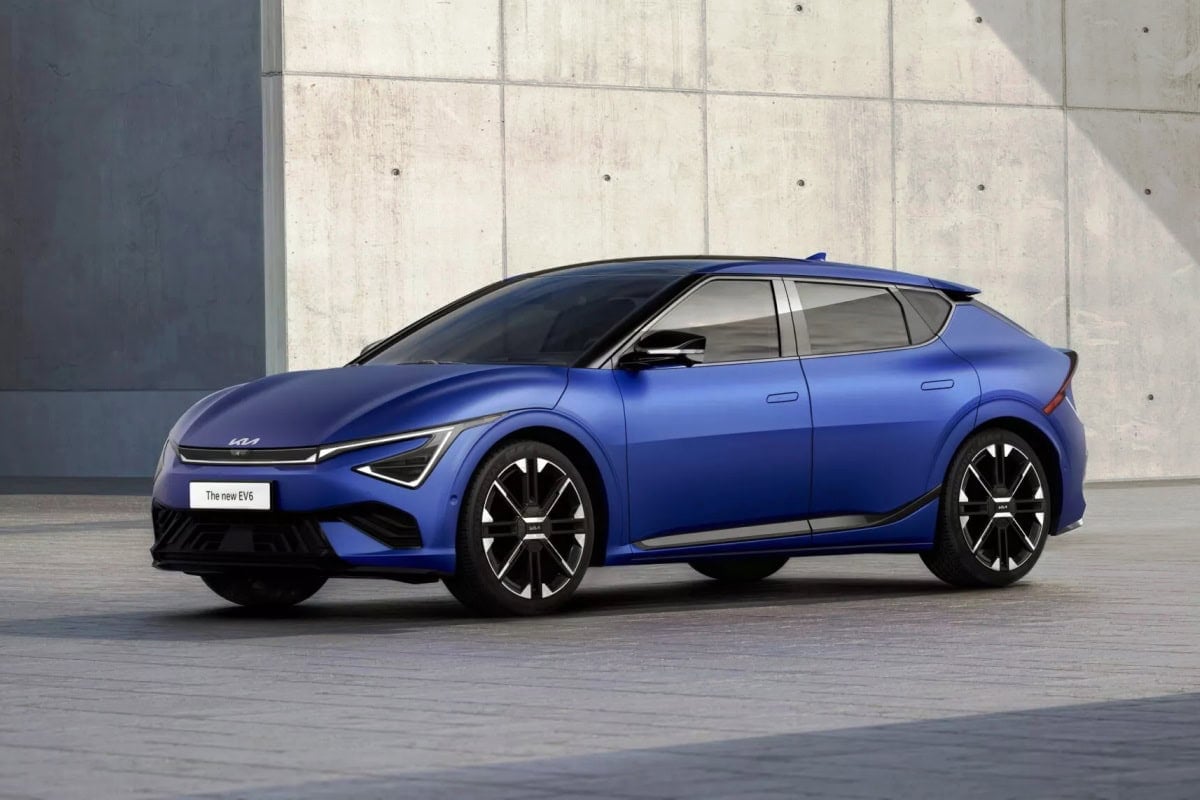
5. Kia EV6
Kia’s all-electric EV6 is not only a marvel of modern technology but also an incredibly capable summer cruiser. Like many electric vehicles, the EV6 benefits from its ability to quickly cool down the cabin without relying on a traditional engine warm-up process.
The instant-on climate control system in the EV6 means that as soon as you start the car, the AC is already running and working to bring the cabin temperature down rapidly. This is a huge advantage in the summer months, as there’s no waiting for the engine to heat up before the air conditioning kicks in.
One of the standout features of the EV6 is its dual-zone climate control, which allows both the driver and passenger to set their own preferred temperatures. This is especially beneficial for long trips, where the temperature can vary from one part of the cabin to another, and helps avoid the discomfort of fighting over the AC controls.
Additionally, ventilated seats are available in higher trims of the EV6, offering an extra layer of comfort by actively cooling the seat cushions and backrest. This feature is especially useful when the sun has been beating down on your car for hours, turning your seats into sizzling hot surfaces.
The UV-reducing glass and reflective surfaces in the EV6 play a key role in keeping the cabin cool. The glass windows prevent a significant amount of heat from entering, which helps to maintain a more stable cabin temperature throughout the day.
Moreover, the EV6’s minimalist interior, with light-colored materials and a modern, spacious design, further contributes to a cooler atmosphere inside the cabin.
By integrating these cooling technologies, Kia’s EV6 is an electric vehicle that doesn’t just stand out for its performance and style but also for its impressive ability to stay comfortable in hot climates.
5 Cars That Turn Into Ovens
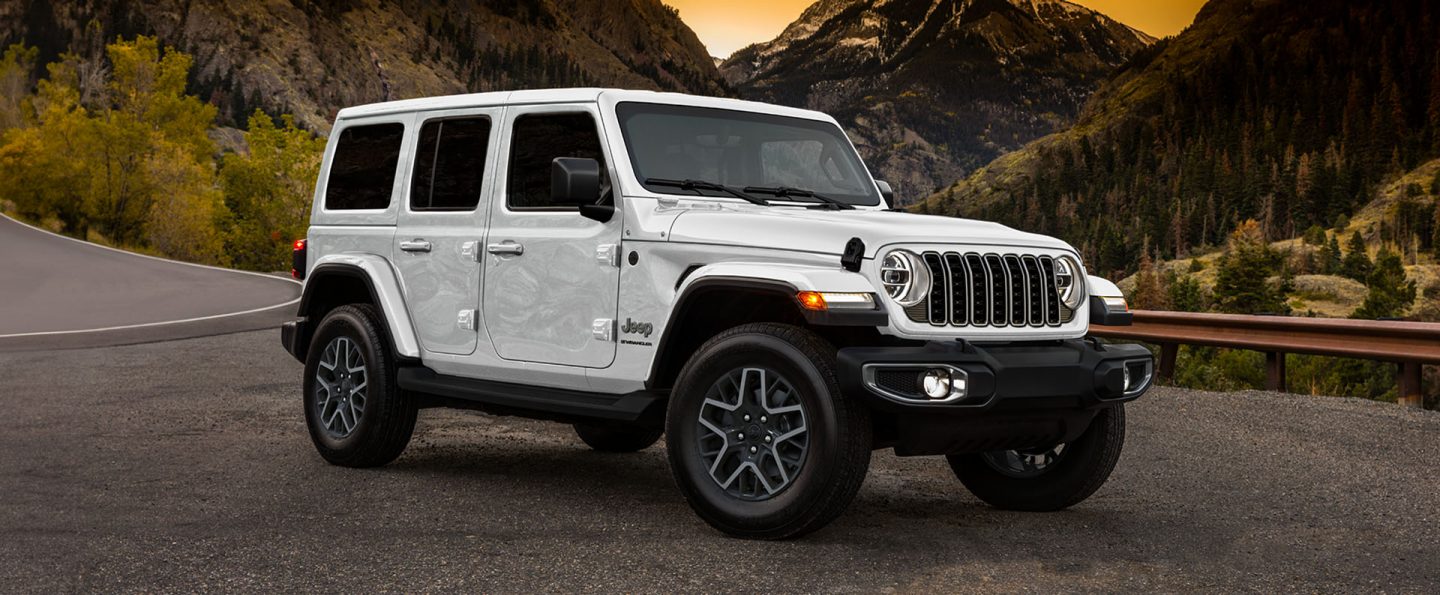
1. Jeep Wrangler (Non-Hybrid Trims)
The Jeep Wrangler is one of the most iconic off-road vehicles on the market, known for its rugged design, versatility, and ability to tackle the toughest terrains.
However, when it comes to hot summer days, this SUV quickly turns into an oven. The Wrangler’s open-air design, which is part of its charm, is also its Achilles’ heel when it comes to staying cool.
Many Wrangler owners opt for the removable soft tops or hardtops, which, while great for off-roading or enjoying the outdoors, provide minimal insulation from the heat.
The combination of direct sunlight streaming in through the roof and side windows can cause the interior to heat up rapidly, making the vehicle feel like a greenhouse during the middle of summer.
Inside, the materials used in lower trims—such as black plastic dashboard components, leather, and vinyl seats—quickly absorb and retain heat.
The Wrangler’s cabin isn’t particularly spacious either, which means there’s less air to circulate and keep cool.
Even when you blast the air conditioning, it can take a long time for the temperature to drop to a comfortable level, especially when the vehicle has been parked under the sun for hours. The Upright windshield and windows only add to the issue, as they trap more sunlight inside and don’t allow much natural airflow when the vehicle is parked.
The air conditioning system, while decent for most other vehicles, simply isn’t enough to combat the extreme heat that builds up in the Wrangler’s interior.
On top of that, many Wrangler owners stick with base trims that lack features like ventilated seats or dual-zone climate control, which would help mitigate the heat. The AC system often feels overwhelmed, especially during the peak of summer, leading to a sweaty, uncomfortable ride.
Even worse, when driving with the top off or the doors removed—something many owners do for the fun of it—there’s little protection from the sun, and you’re left with nothing but the blazing heat beating down on you.
While it’s an amazing off-roading machine, the Jeep Wrangler is certainly not the best choice for those who want to stay cool during the dog days of summer.
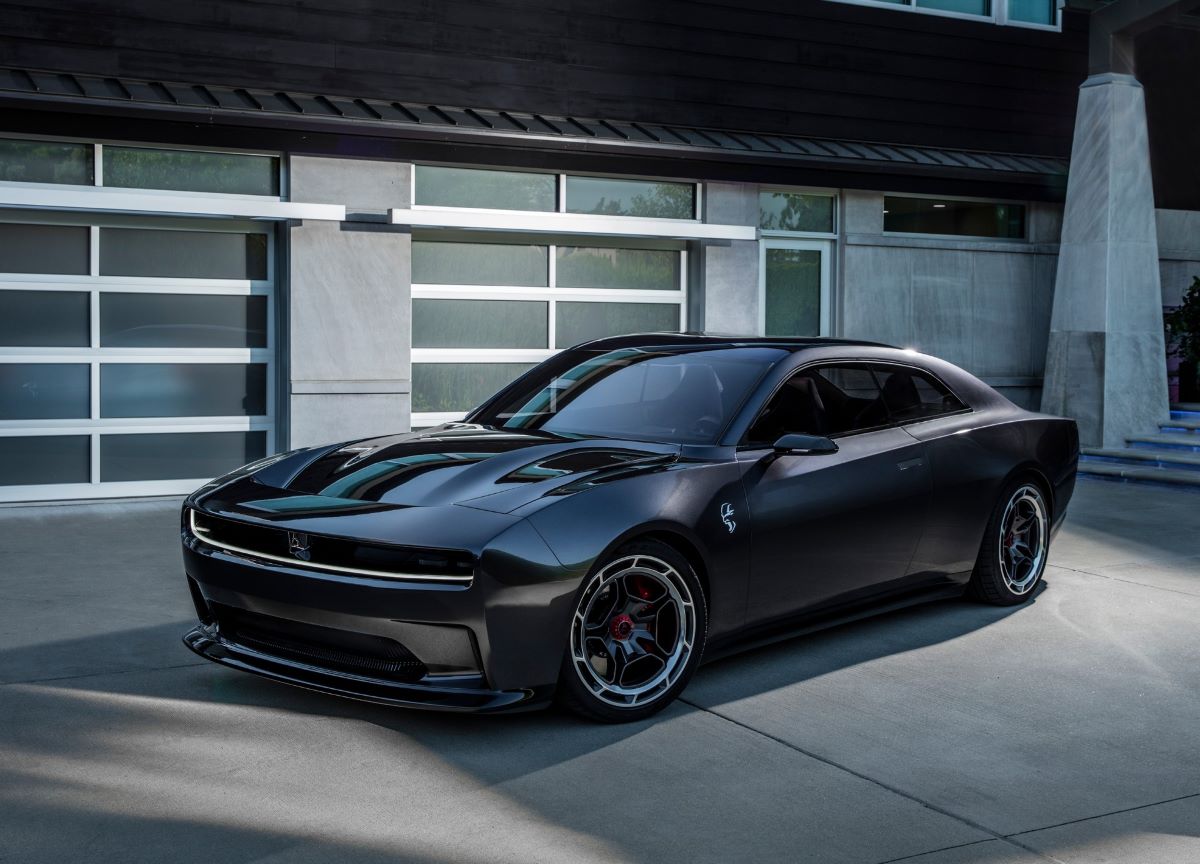
2. Dodge Charger (Base and Mid Trims)
The Dodge Charger is a muscle car that exudes power, performance, and style. However, like many high-performance vehicles, the Charger is built with an emphasis on performance rather than comfort, and this is especially apparent during the summer months.
The base and mid trims of the Charger come equipped with relatively dark interiors, including black leather seats and dark plastic trim, which absorb heat like a sponge.
After just a few hours under the sun, the inside of the Charger can feel like a sauna, with seats, steering wheel, and even the gear shift reaching almost unbearable temperatures. The lack of ventilated seats or any type of cooling system on these lower trims means that you are left with little recourse against the extreme heat that builds up inside.
The large, curved windshield and expansive windows, while great for visibility, let in an overwhelming amount of sunlight. The heat from the sun accumulates in the cabin quickly, and the Charger’s air conditioning system can struggle to keep up, especially when the vehicle is parked in direct sunlight.
Though the AC is generally strong, it takes a significant amount of time to cool down the vehicle’s interior, particularly when the outside temperature exceeds 90°F.
For many drivers, this means having to endure several minutes of discomfort before the cabin becomes livable again. The cabin’s design, with its wide, open space and hard surfaces, also traps heat, making it difficult for the AC to effectively circulate cool air.
While newer versions of the Charger offer some cooling features, such as remote start and more advanced climate control systems, many Charger owners opt for the lower-end trims to keep costs down.
These trims often lack the high-end features that would help mitigate the heat buildup in the cabin. Without these features, you’re left with a hot and sticky ride, where even the AC can feel like it’s working against you.
On top of that, the sporty nature of the Charger means that it has limited insulation against external heat, leaving the interior vulnerable to the sweltering sun. When it comes to surviving a summer heatwave, the Charger’s fierce performance may not be enough to cool things down.
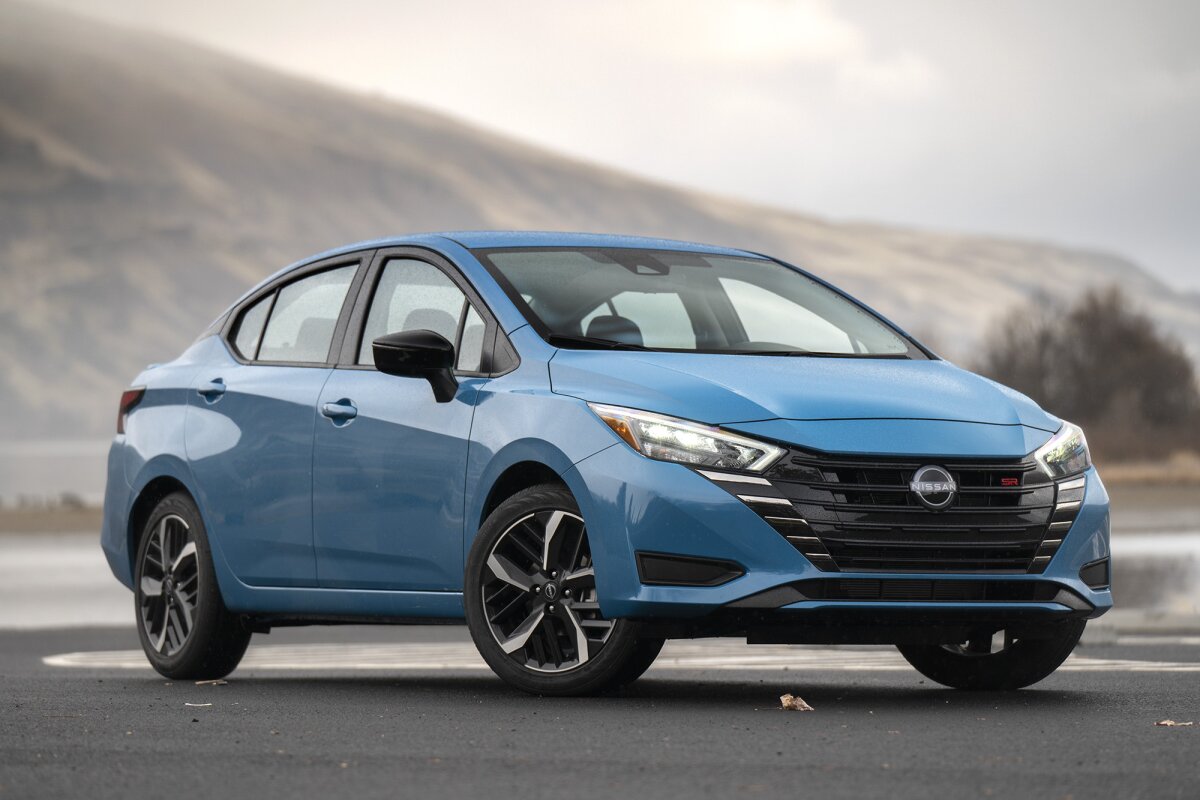
3. Nissan Versa
The Nissan Versa is one of the most affordable subcompact sedans on the market, but its budget-friendly design comes at the expense of comfort, especially when it comes to handling summer temperatures.
The basic interior materials, including hard plastic trim and cheap fabric seats, are designed for durability and low cost but can become extremely uncomfortable when subjected to extreme heat.
The Versa’s interior absorbs heat quickly and retains it, creating an oven-like effect that can leave you sweating as soon as you enter the vehicle. With black cloth seats and a dark interior, the Versa is notorious for trapping heat inside.
You’ll find that even with the air conditioning running at full blast, it takes a while for the cabin to reach a tolerable temperature, making the first few minutes of driving unpleasant at best.
One of the biggest issues with the Versa is its underpowered air conditioning system. On the base models, the AC is not particularly effective in quickly cooling the cabin, particularly on days when the outside temperature climbs over 90°F.
Even with the AC running at full blast, the Versa’s small size and lack of advanced climate control features—such as dual-zone temperature control or ventilated seats—mean that the air can feel stuffy and ineffective when you need it most.
With limited cooling options, you may find yourself wishing for something more substantial as the heat continues to intensify.
Another problem is the lack of sun protection. The Versa doesn’t offer features like tinted windows or UV-resistant glass, which can help reduce the amount of solar heat that enters the cabin. Instead, the windows and windshield allow heat to build up quickly, especially when parked in direct sunlight for hours.
The car’s small size doesn’t help either, as there’s less air circulation in the cabin, which can cause the heat to feel even more oppressive. Unfortunately, these shortcomings mean that the Versa, despite its affordability, isn’t the best option for those who need a vehicle that can handle the extreme summer heat without turning into an oven.

4. Chevrolet Camaro
The Chevrolet Camaro, with its bold design and high-performance engine options, is a car built for speed and excitement. However, when it comes to dealing with summer temperatures, the Camaro falls short.
The low, sloped roofline and small windows are stylish, but they also result in poor air circulation inside the cabin, which can cause the car to heat up significantly when parked under the sun.
The large glass panels let in an overwhelming amount of sunlight, turning the cabin into a blistering hot space as soon as the car is left outside. Because of the vehicle’s sporty interior materials, such as black leather and plastic trim, the heat is absorbed quickly, making the cabin feel like an oven within minutes of parking.
The Camaro’s air conditioning system, while adequate for most driving situations, isn’t nearly as efficient as it needs to be in extreme heat. Given the car’s aggressive design, which prioritizes speed and performance over comfort, the AC struggles to keep the cabin cool during the hottest days of summer.
The ventilation system isn’t particularly strong, and with no ventilated seats available in lower trims, the interior can become uncomfortably hot before the AC catches up.
The lack of features like remote start, which is available on other performance vehicles, only exacerbates the situation, as you can’t pre-cool the cabin before you enter the car. If you’re not careful, you could find yourself burning your hands on the steering wheel or struggling to find a comfortable temperature during your drive.
Additionally, the Camaro’s limited rear visibility and glare from the sun can make driving in hot weather even more challenging.
When the sun is shining directly on the glass panels, the interior heats up quickly, and the car’s low, cockpit-style seating position means you’re more exposed to the heat than in more traditional vehicles.
Despite its sleek appearance and thrilling performance, the Camaro’s ability to keep its cool in summer weather leaves much to be desired. It’s a car built for speed, but not for comfort under the sun.
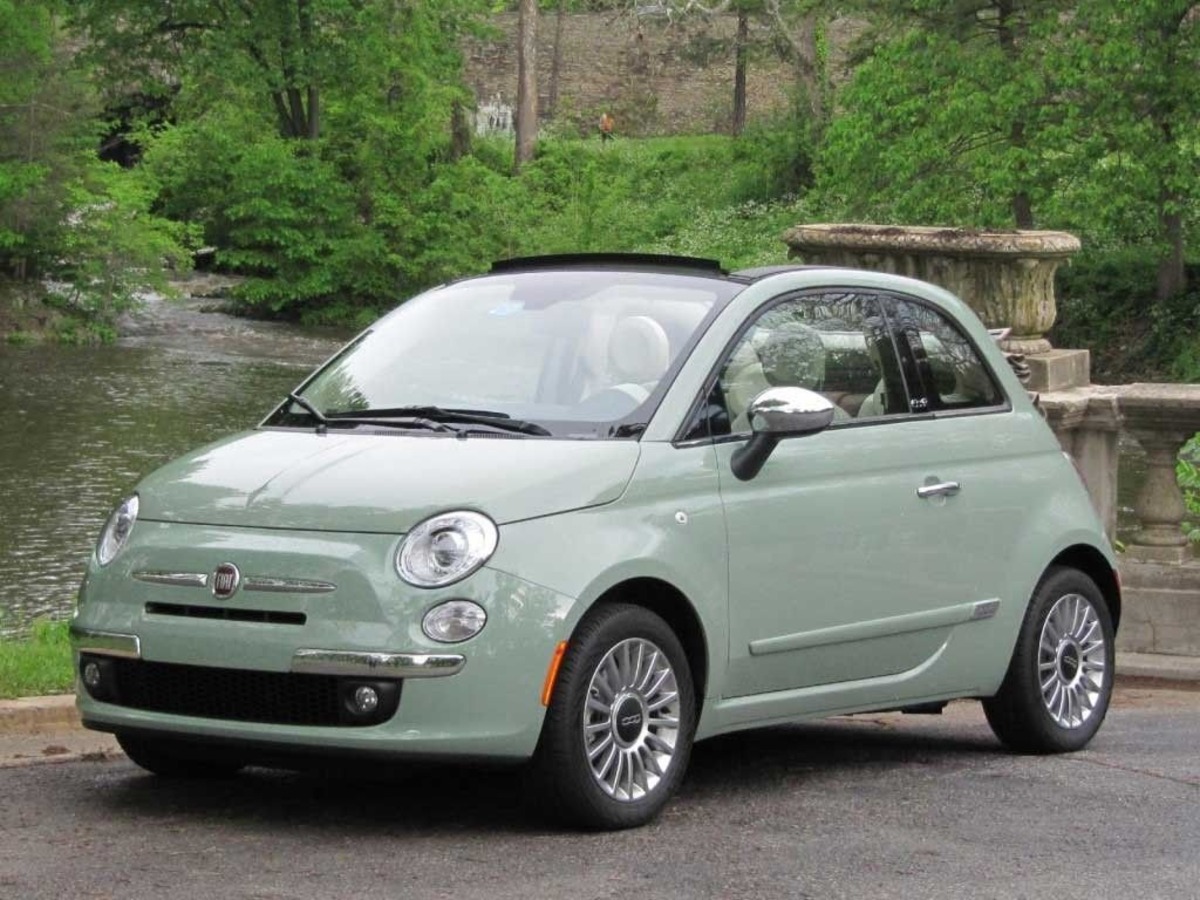
5. Fiat 500
The Fiat 500 is a cute and compact city car that’s perfect for maneuvering through tight urban streets. However, when it comes to summer heat, it’s one of the worst offenders. The small cabin and large glass windows allow heat to accumulate quickly, especially if the vehicle has been parked outside for a prolonged period.
The glass surfaces on the Fiat 500 do little to protect the interior from the sun, meaning that the car’s cabin can heat up to uncomfortable levels in a short amount of time. The black seats and dark interior materials further exacerbate the problem, as they absorb sunlight and retain the heat, turning the car into an oven once you step inside.
The air conditioning system in the Fiat 500, while functional, is not powerful enough to deal with the extreme heat that builds up inside the small cabin.
Since the cabin is so compact, the AC struggles to distribute cool air evenly, and it can take quite a bit of time to lower the temperature to a comfortable level.
Without features like ventilated seats or dual-zone climate control, the interior can remain uncomfortably hot for longer than expected. While newer models of the Fiat 500 come with more modern features, the basic design of the car makes it difficult to escape the oppressive heat, particularly in the height of summer.
Another issue is the lack of insulation and the vehicle’s low roofline, which contributes to the sun’s direct heat entering the car. The small windows offer limited protection from the sun, and the limited space inside makes it harder for the cool air to circulate efficiently.
The Fiat 500 may be charming and practical for city driving, but when it comes to staying cool in the summer, it’s better suited for short trips rather than long drives under the sun.
Also Read: 5 Parking Sensors That Actually Help and 5 That Are Too Sensitive
Summer can be a glorious season, filled with vacations, road trips, and late sunsets—but for many drivers, it also brings a relentless battle against the heat. The experience of getting into a boiling-hot car after it’s been parked in the sun for hours is familiar to most, and while many assume that all modern vehicles can handle extreme temperatures equally, the reality is far from it.
Some cars are engineered with hot climates in mind, offering a range of features to combat cabin heat and ensure a pleasant driving experience. Others, however, are woefully under-equipped, turning into personal ovens with little relief even after the engine starts.
The five cars that excel at keeping their cool—the Tesla Model Y, Hyundai Sonata, Toyota RAV4 Prime, Volvo XC60 Recharge, and Kia EV6—represent a growing movement in the automotive world where comfort and technology intersect.
These vehicles go beyond merely providing an air conditioning system. They incorporate intelligent climate management features such as remote pre-conditioning, ventilated seats, dual-zone or multi-zone climate control, and solar-reflective glass.
Some, like the Tesla Model Y, even offer systems that monitor and manage cabin temperature automatically, ensuring a consistently cool experience without any input from the driver. These cars prove that thoughtful engineering and smart technology can dramatically enhance how we experience summer driving.
On the other hand, we’ve also highlighted five vehicles that struggle when temperatures climb: the Jeep Wrangler, Dodge Charger, Nissan Versa, Chevrolet Camaro, and Fiat 500. Each of these models suffers from a combination of design limitations, insufficient cooling systems, or an absence of basic summer-friendly features.
Whether it’s due to dark interior materials that trap heat, inefficient AC systems, or lack of remote climate controls, these cars tend to become intensely uncomfortable when the sun is at its peak. While they may excel in other categories—off-road capability, performance, or urban maneuverability—they fall short in providing a comfortable cabin in hot weather.
It’s worth noting that some of the heat-related shortcomings in these vehicles can be mitigated with aftermarket solutions—window tints, sunshades, seat covers, or portable fans—but these are workarounds rather than integrated solutions.
At the end of the day, vehicles that are designed with heat resilience in mind will always provide a more consistent, reliable experience during the hottest months. This is especially important in areas where summer lasts more than just a couple of months and where high temperatures are part of daily life.
Ultimately, the decision of which vehicle to buy should take into account not just specs and price tags, but how well a car performs in everyday situations—such as sitting in a sun-soaked parking lot while you shop or commute. Summer comfort is not just a luxury; for many drivers, it’s a necessity.
Whether you’re choosing your next family SUV, a city commuter, or an electric future-forward car, paying attention to how a vehicle handles heat will ensure that your summer drives are comfortable, safe, and sweat-free.

